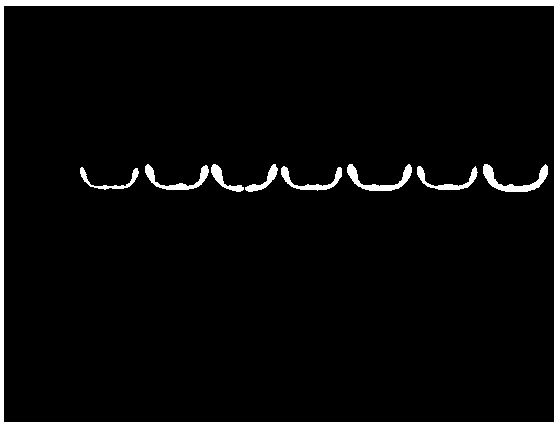Sedum lineare Thunb salt-tolerant gene SLEIPP and applications thereof
A salt-tolerant gene, the technology of S. agaricus, applied in the fields of molecular biology and biology, can solve the problems of limiting soil utilization and so on
- Summary
- Abstract
- Description
- Claims
- Application Information
AI Technical Summary
Problems solved by technology
Method used
Image
Examples
Embodiment 1
[0029] 1. Cloning of Sedum lineare Thunb (Sedum lineare Thunb, referred to as Sl) SLEIPP gene
[0030] The total RNA was extracted from the S. japonica (taken from Binhai New District, Tianjin) treated with 150mM NaCl aqueous solution using the plant RNeasyPlant Mini Kit (Transgene Code#E101-0150rxns), and the EasyScriptFrist-Strand cDNA SynSgesis SuperMix (Transgene Code#AE301- 03100rxns) to reverse transcribe cDNA. Perform high-throughput sequencing on the cDNA (Novogene's high-throughput sequencing) to obtain the 3' end sequence of the SLEIPP gene, and use RACE technology (Takara-RACE kit) to obtain the full-length cDNA sequence of the SLEIPP gene and amplify the obtained The SLEIPP gene was sequenced and analyzed, and the full length of the complete SLEIPP gene was 819bp. When constructing the overexpression vector, the pBI121 recombination site was added to the 5' end of the specific primer, upstream 5'-ACGGGGGACTCTAGAGGATCC-3' (SEQ ID No. 3), downstream 5'-CGATCGGGGAAAT...
Embodiment 2
[0081] 1. Transformation of Arabidopsis
[0082] (1) Transform Arabidopsis.
[0083] Specific steps for transforming Arabidopsis:
[0084] ①Activation and expanded culture of the positive clone colonies obtained in Example 1
[0085] Activation: Pick the preserved positive clone colonies and place them in 3mL YEB liquid medium (add Gen, Rift, Sp antibiotics to make the concentration respectively 30mg / L, 25mg / L, 50mg / L) and cultivate for about 15 hours (to OD600=0.8 around), 180rpm, 28°C.
[0086] Expansion culture of positive clones: Add appropriate amount of antibiotics (Gen, Rift, Sp antibiotics, concentrations are 30mg / L, 25mg / L, 50mg / L) in fresh 10ml YEB liquid medium, and then inoculate appropriate amount of positive clones liquid into YEB liquid medium for cultivation, 180 rpm, at 28°C until OD600=0.6.
[0087] ② transformation
[0088] After centrifuging the bacterial solution (3000rpm, 15°C, 10min), discard the supernatant, and resuspend the bacterial cells with a...
Embodiment 3
[0095] 1. Transform poplar
[0096] The poplars transformed by the positive clones were Populus alba × P. alba INRA clone N7171-B4 (hereinafter referred to as 717 poplars) tissue culture seedlings.
[0097] (1) Place the axillary buds or terminal buds of 717 poplar on the basic medium for subculture propagation, and cultivate for 6 weeks to obtain tissue cultured seedlings; cut off the 1 cm stem section of the tissue cultured seedlings without axillary buds, scratch the wound and store at 24°C Pre-cultivate for 3 days in the dark;
[0098] (2) The positive clone bacterial liquid (OD600=0.8) obtained by the selected embodiment 1 is centrifuged at room temperature and 4000rpm for 10min, the supernatant is discarded, and an equal volume of M solution (M solution: MS salt 4.4g) is used for the precipitation , sucrose 30g, auxin NAA1.86mg, cytokinin 2ip1.02mg, acetosyringone As19.86mg, dilute to 1L, pH=5.7), resuspend, activate at 24°C, 100rpm for 1h to obtain infection solution; ...
PUM
 Login to View More
Login to View More Abstract
Description
Claims
Application Information
 Login to View More
Login to View More - Generate Ideas
- Intellectual Property
- Life Sciences
- Materials
- Tech Scout
- Unparalleled Data Quality
- Higher Quality Content
- 60% Fewer Hallucinations
Browse by: Latest US Patents, China's latest patents, Technical Efficacy Thesaurus, Application Domain, Technology Topic, Popular Technical Reports.
© 2025 PatSnap. All rights reserved.Legal|Privacy policy|Modern Slavery Act Transparency Statement|Sitemap|About US| Contact US: help@patsnap.com



